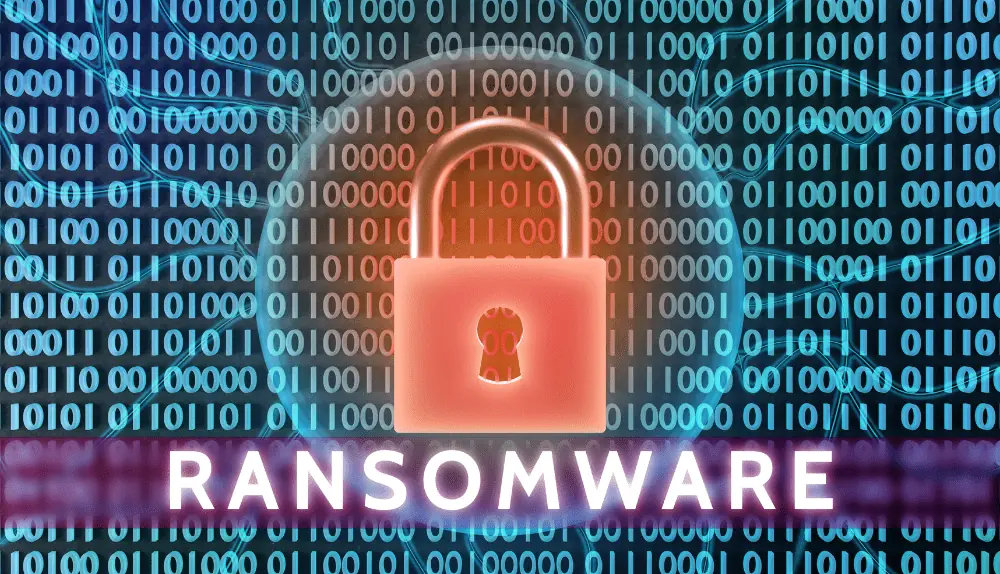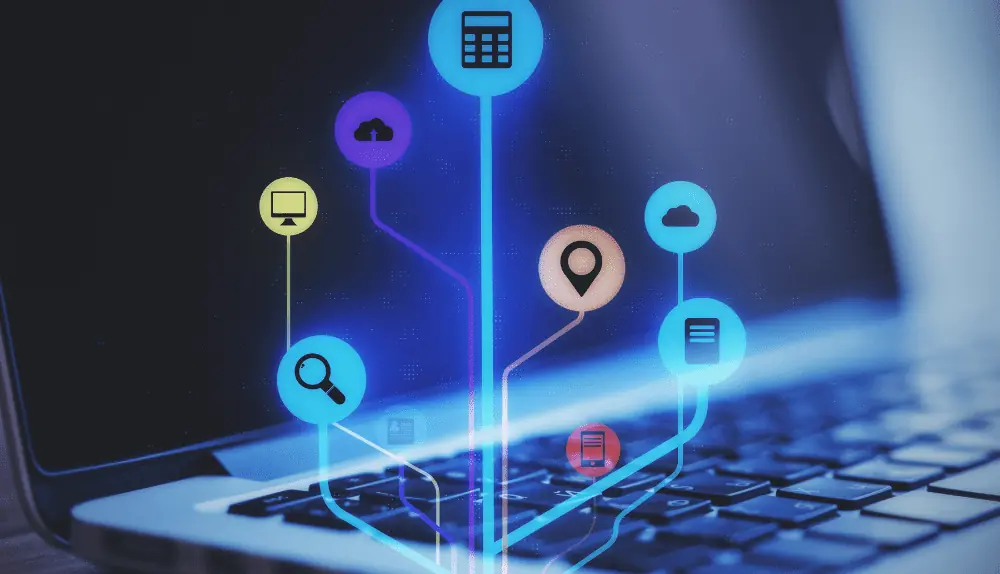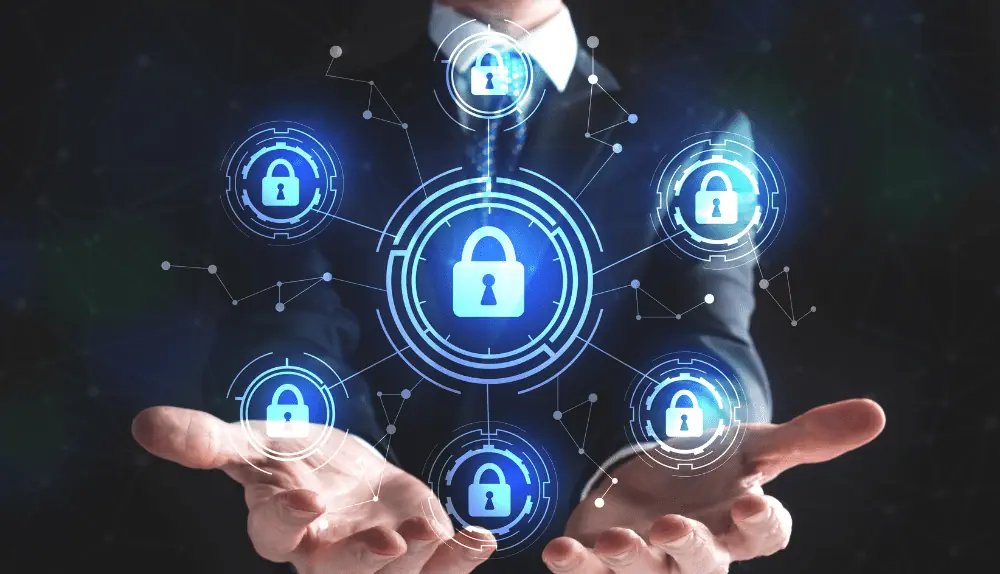Cybersecurity is an ever-evolving field with new threats and trends emerging every year. Fintech companies, in particular, have to stay abreast of the latest trends in cybersecurity to avoid attacks and protect customer cardholder data. The past year has seen a surge in cybercrime, with Ransomware-as-a-Service, Hackers-as-a-Service, and Access-as-a-Service lowering the entry barrier for hackers. In this article, we explore the latest cybersecurity trends for cardholder data in 2023 and how fintechs can prepare themselves for these threats.
Top Cybersecurity Trends For Cardholder Data in 2023
Rise of Ransomware and Malware

Ransomware and malware attacks have been on the rise in recent years, causing significant damage to individuals and organizations worldwide. These cyber threats have become a significant concern for businesses that deal with cardholder data, as they can result in the compromise of sensitive customer information.
The rise of ransomware and malware can be attributed to various factors, including the increasing popularity of cryptocurrencies, which allow attackers to receive payments anonymously. The growth of the internet and the increasing number of devices connected to it have also contributed to the rise of these attacks.
Ransomware attacks are particularly concerning for businesses that handle cardholder data. This type of attack involves encrypting the victim’s files and demanding a ransom payment in exchange for the decryption key. If the victim fails to pay the ransom, the attackers may threaten to publish the stolen data online or sell it on the dark web. This can result in significant financial losses, as well as reputational damage and legal repercussions.
Malware attacks are also a significant threat to businesses that handle cardholder data. Malware refers to malicious software that is designed to infiltrate a computer or network and steal sensitive information. Malware can take many forms, including viruses, worms, and Trojans. Once installed on a system, malware can be used to steal cardholder data, spy on user activity, or take control of the infected device.
To combat the rise of ransomware and malware attacks, businesses that handle cardholder data must prioritize cybersecurity. This involves implementing robust security measures, such as firewalls, antivirus software, and intrusion detection systems. Regular security assessments and employee training are also essential to ensure that all staff members are aware of the risks and best practices for protecting sensitive data.
The rise of ransomware and malware attacks poses a significant threat to businesses that handle cardholder data. To mitigate these risks, companies must take proactive steps to enhance their cybersecurity measures and ensure that all staff members are aware of the risks and best practices for protecting sensitive information.
Threats to Software Supply Chains

Software supply chain attacks have emerged as a major threat to cybersecurity in recent years. These attacks involve compromising a software vendor’s systems or the code itself to introduce malicious code into the software being distributed to users. This allows attackers to gain access to sensitive data or even take control of affected systems.
In the context of cardholder data security, supply chain attacks can pose a significant threat. Many organizations use third-party software and services that handle sensitive cardholder information, such as payment processing systems or customer databases. If these systems are compromised through a supply chain attack, attackers can gain access to sensitive cardholder data, putting both the organization and its customers at risk.
One example of a supply chain attack that targeted the cardholder data industry was the breach of the SolarWinds Orion software in late 2020. This attack compromised the software supply chain of SolarWinds, a widely used IT management software vendor. The attackers introduced a malicious code into a software update, which was then distributed to thousands of SolarWinds customers. This allowed the attackers to gain access to sensitive data, including cardholder information, from numerous organizations.
To mitigate the risk of software supply chain attacks, organizations must implement strong security measures throughout their software supply chain. This includes conducting thorough security assessments of third-party vendors and their software, as well as implementing multi-factor authentication, encryption, and other security controls to protect against unauthorized access. Additionally, organizations should regularly update and patch their software to address any vulnerabilities that may be exploited in a supply chain attack.
The rise of supply chain attacks poses a significant threat to the security of cardholder data. Organizations must take proactive steps to secure their software supply chain and ensure that their third-party vendors have robust security measures in place to protect against these attacks. By implementing strong security controls and regularly assessing and updating their software, organizations can better protect themselves and their customers from the risks posed by supply chain attacks.
War on Talent in Cybersecurity

The field of cybersecurity is constantly evolving, and with the increasing reliance on technology in our daily lives, it has become more crucial than ever before to have a strong cybersecurity team in place. However, one of the biggest challenges in this industry is the “War on Talent” – the struggle to find and retain skilled cybersecurity professionals.
As the demand for cybersecurity professionals continues to grow, companies are finding it increasingly difficult to find and hire qualified candidates. This is partly due to the fact that the field is constantly evolving and requires a diverse set of skills and knowledge. Additionally, there is a shortage of individuals with the necessary cybersecurity education and training, as well as experience in the field.
The War on Talent in cybersecurity is further exacerbated by the fact that many companies are competing for the same pool of candidates, which can drive up salaries and make it even more difficult for smaller companies to attract and retain talent. This creates a vicious cycle, as smaller companies may not have the resources to offer competitive salaries, which in turn makes it more difficult to attract top talent, leaving them more vulnerable to cybersecurity threats.
Furthermore, the rapidly changing landscape of cybersecurity means that it is not enough to simply hire skilled professionals – they must also be able to keep up with emerging threats and adapt their strategies accordingly. This requires ongoing training and professional development, which can be difficult for companies to provide and for employees to balance with their daily workload.
To address the War on Talent in cybersecurity, companies need to be proactive in their hiring and retention strategies. This may involve investing in training and development programs for existing employees, as well as offering competitive salaries and benefits packages to attract top talent. Additionally, companies can look to expand their recruitment efforts by reaching out to a more diverse pool of candidates, including those with non-traditional backgrounds.
The War on Talent in cybersecurity is a significant challenge facing companies in the industry. To effectively protect cardholder data and other sensitive information, companies must prioritize hiring and retaining skilled cybersecurity professionals, and take proactive steps to address the challenges posed by this ongoing issue.
Internet of Things (IoT) and Mobile Devices
The increasing popularity and proliferation of Internet of Things (IoT) devices and mobile devices have made them a prime target for cybercriminals. These devices have become an integral part of our lives and are used for a wide range of activities, including financial transactions. As a result, they are becoming an attractive target for cyber attackers looking to steal sensitive information such as cardholder data.
One of the biggest challenges with IoT and mobile devices is their sheer volume and diversity. There are billions of these devices in use, and they all have different hardware, software, and security configurations. This makes it difficult for organizations to effectively manage and secure them all.
Another challenge is the lack of security built into many IoT and mobile devices. Many of these devices are designed with usability and convenience in mind, rather than security. This makes them vulnerable to cyber attacks that exploit weaknesses in their software and hardware.
Furthermore, mobile devices and IoT devices often connect to a variety of networks and systems, creating additional attack surfaces that can be exploited by cybercriminals. This includes public Wi-Fi networks, cellular networks, and other IoT devices.
To address these challenges, organizations need to take a multi-layered approach to security that includes implementing strong encryption and authentication protocols, regularly updating software and firmware, and monitoring devices for suspicious activity. It is also important for organizations to educate users about the risks associated with IoT and mobile devices and how to protect themselves.
The widespread use of IoT and mobile devices presents a significant challenge to securing cardholder data. However, by implementing best practices and adopting a proactive approach to cybersecurity, organizations can effectively mitigate these risks and protect their sensitive data from cyber threats.
Artificial intelligence and machine learning in cybersecurity
Artificial intelligence (AI) and machine learning (ML) have emerged as powerful tools in cybersecurity to detect, prevent, and respond to threats, including those related to cardholder data.
AI and ML algorithms can be trained to identify patterns and anomalies in large volumes of data, which can help identify potential cyber attacks in real-time. This is particularly important in the case of cardholder data, as any unauthorized access or breach can have significant financial and reputational implications.
One of the key advantages of AI and ML is their ability to continuously learn and adapt to new threats. This is particularly useful in the rapidly evolving landscape of cybersecurity, where new attack vectors and techniques are constantly emerging. By leveraging AI and ML, organizations can stay one step ahead of cybercriminals and mitigate potential attacks before they can cause significant damage.
However, as with any technology, AI and ML also present new challenges and risks. For example, attackers may use these tools to create more sophisticated and targeted attacks, and there is a risk of false positives or false negatives that could lead to either unnecessary alerts or missed threats. It is therefore important for organizations to carefully evaluate and implement AI and ML technologies in a responsible and effective manner.
AI and ML have the potential to significantly enhance cybersecurity, particularly in the context of protecting cardholder data. However, organizations must also be mindful of the potential risks and limitations of these technologies and ensure that they are implemented and managed in a way that maximizes their benefits while minimizing any potential drawbacks.
Cloud security
Cloud computing has become an integral part of many businesses’ operations. It provides a flexible, scalable, and cost-effective way to store and process data, and enables organizations to access powerful computing resources without having to invest in expensive hardware and software. However, the use of cloud services also brings new security risks and challenges that organizations must address to protect their sensitive data, including cardholder data.
Cloud security refers to the set of technologies, policies, and controls designed to protect cloud computing environments from cyber threats. The security challenges in the cloud stem from the fact that data and applications are no longer housed within an organization’s physical premises. Instead, they are hosted in data centers managed by third-party providers, which raises concerns over data privacy, control, and visibility.
One of the primary concerns in cloud security is data protection. Cloud providers offer different levels of encryption and data protection services to protect data from unauthorized access or theft. To ensure the security of cardholder data, businesses must choose a cloud provider that complies with the relevant data privacy regulations, such as the General Data Protection Regulation (GDPR) and the Payment Card Industry Data Security Standard (PCI DSS).
Another challenge is the risk of account hijacking, where an attacker gains access to a user’s account and can access sensitive data or resources. To mitigate this risk, organizations should implement multi-factor authentication (MFA) to ensure that only authorized users can access cloud resources.
The use of cloud services also presents challenges related to compliance and auditing. Businesses must be able to demonstrate that they comply with relevant regulations and industry standards, and they must have visibility into their cloud environments to identify and respond to security incidents. To achieve this, businesses must work with cloud providers that offer robust logging, monitoring, and auditing capabilities.
The use of cloud computing is expected to continue to grow, and cloud security will remain a critical concern for businesses that handle cardholder data. To ensure the security of their data, businesses must take a holistic approach to cloud security that includes careful provider selection, strong access controls, robust data protection measures, and effective monitoring and auditing.
Conclusion
As we move into 2023, the cybersecurity landscape continues to evolve. Fintechs must stay vigilant and be prepared to adapt to new threats and emerging trends. By implementing effective security controls, organizations can protect themselves from cyber attacks and ensure the safety of their customers’ cardholder data.

